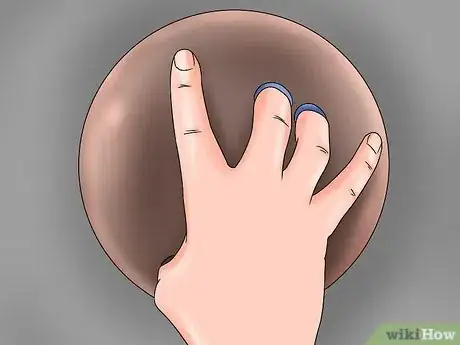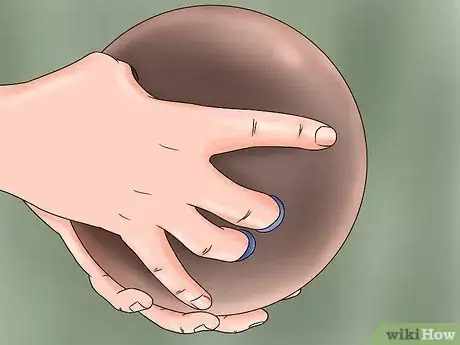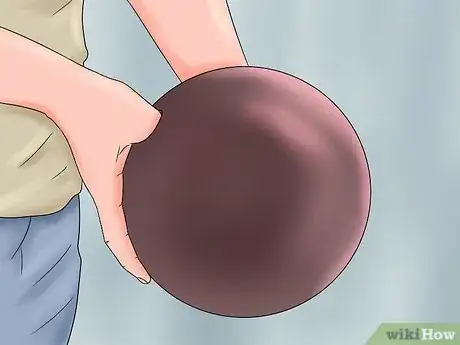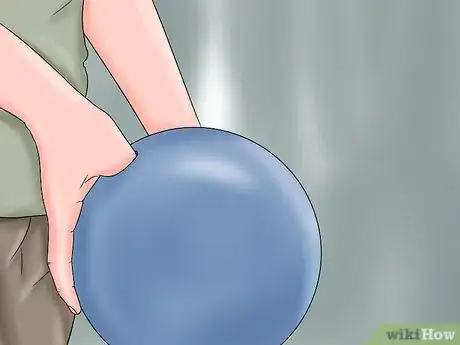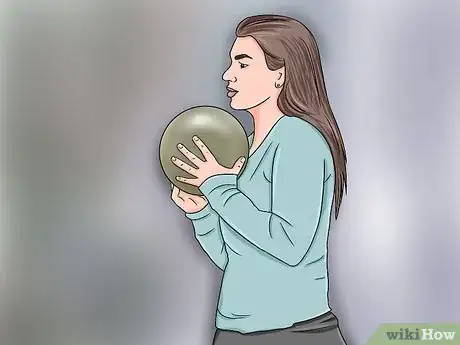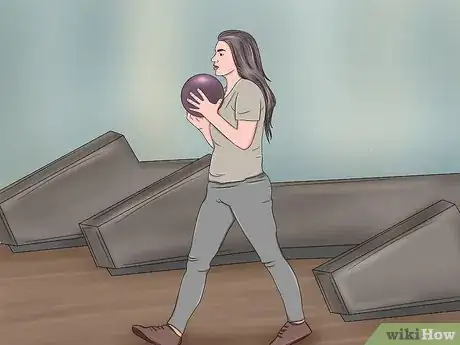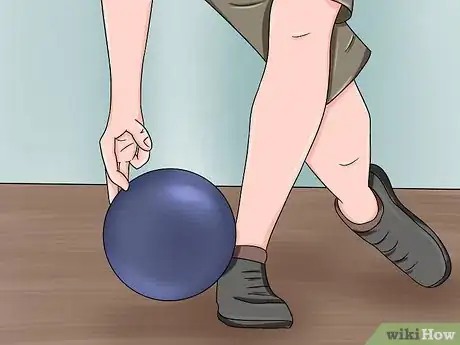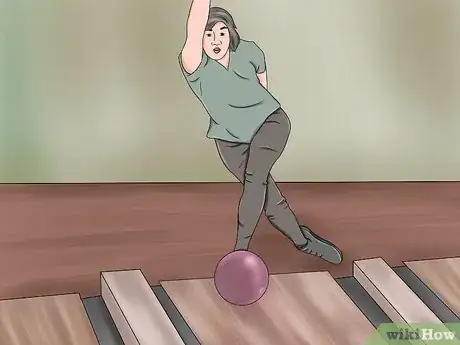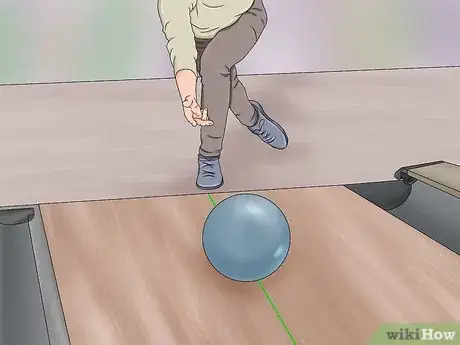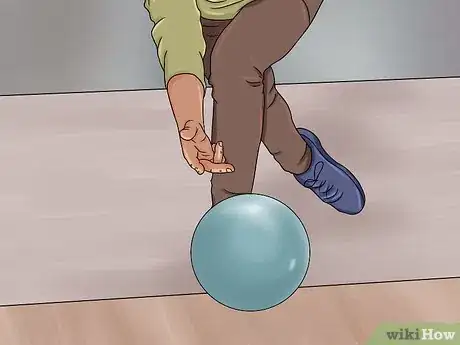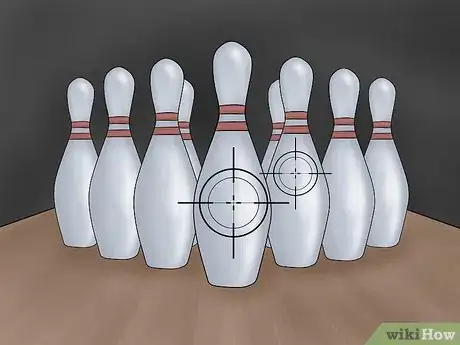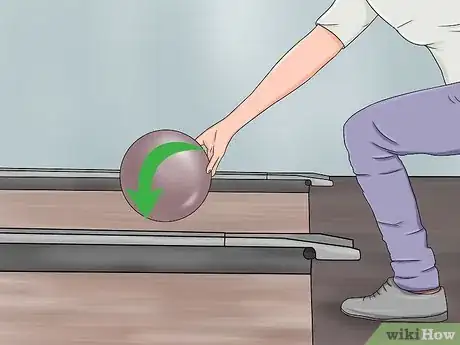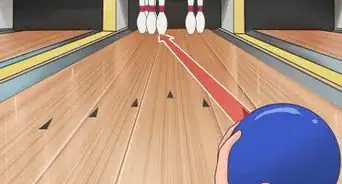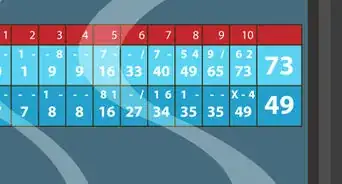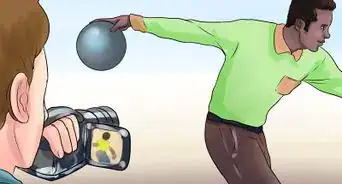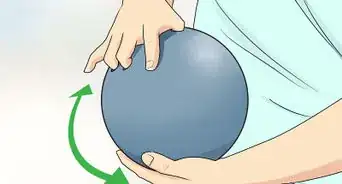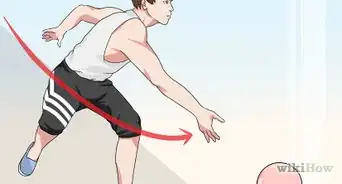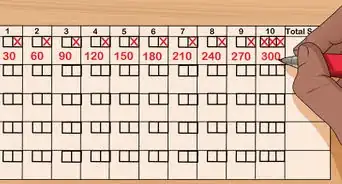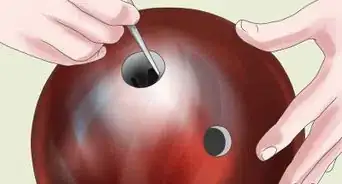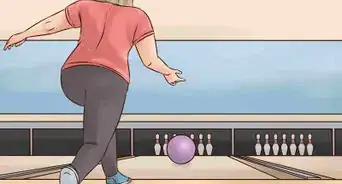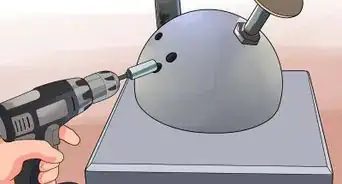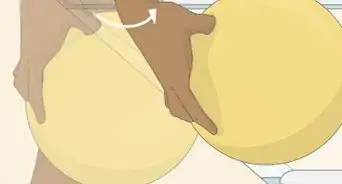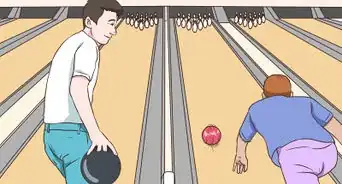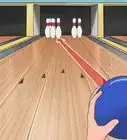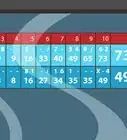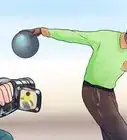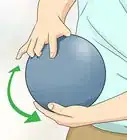This article was co-authored by wikiHow Staff. Our trained team of editors and researchers validate articles for accuracy and comprehensiveness. wikiHow's Content Management Team carefully monitors the work from our editorial staff to ensure that each article is backed by trusted research and meets our high quality standards.
There are 10 references cited in this article, which can be found at the bottom of the page.
This article has been viewed 44,324 times.
Learn more...
One of the most celebrated advancements in modern bowling equipment is the “reactive” bowling ball. Unlike normal bowling balls which are covered in polyurethane or dense plastic, reactive balls are coated with a layer of grippy resin. This increases the ball’s traction on the lane and gives the bowler more control over the speed and angle of the throw[1] . Most high-level bowlers take advantage of this added traction by throwing hook shots, which tend to result in more strikes because of their rotation and angle of entry. If you’ve been trying to improve your bowling game, getting a feel for a reactive bowling ball will allow you to pull off shots that would have before been unimaginable.
Steps
Gripping the Ball
-
1Insert your fingers into the ball. If you’re right-handed, slide the middle and ring fingers of your hand hand into the upper two finger holes. If you’re left-handed, insert the fingers of your left hand. The finger holes should come to a stop right around the first knuckle. This grip will be most effective for bowling precise angles.[2]
- Using any other fingers won’t permit you to keep the ball centered in your hand.
- Select a ball that doesn’t force you to stretch your hand. There should be enough room between your palm and the surface of the ball to fit a pencil.[3]
-
2Use your other hand to steady the ball. Place your non-bowling hand flat against the opposite side of the ball. You’ll use this hand to steady the ball as you initiate the swing. Relying too heavily on the movement of your bowling hand can cause the ball to sway before the moment of release—this will throw off your shot.
- Your support hand should remain on the ball until just before you roll.
Advertisement -
3Remove your thumb from the ball. Rest your thumb flat against the outside of the ball to get it out of the way. Unlike a conventional roll where the thumb guides the ball during release, a proper hook shot requires the ball to be able to rotate slightly.[4]
- Imagine that you’re cupping the ball with your thumb rather than pressing against it.
- Tuck the ball against your wrist as you raise it behind you to help stabilize it.
-
4Hold the ball loosely. Keep your wrist straight but relaxed. To bowl a strike with a hook shot, it’s critical that you release the ball at exactly the right time and position. If you’re too tense, you’re more likely to neutralize the rotation of the roll or miss entirely.[5]
- Try not to bring your arm out too far to the side. The ball should move within a few inches of your support leg when you bowl.
Bowling a Hook Shot
-
1Line up your body with the pins. Before you roll, make sure your stance is squared up and your head is facing forward. Bend your knees slightly to give yourself a solid base. Any shifting or tilting of the feet, waist or shoulders will rob your shot of accuracy.[6]
- Start straight and finish straight.
- Remember that the angle of the shot depends largely on the angle of your body.
-
2Take a few steps toward the fault line. Glide smoothly into each step, keeping your head level as you travel forward. Raise the ball to face level, then bring it down and back behind you. As you prepare to release the ball, lower your hips and lean your upper body downward to put you closer to the lane.[7]
- Let the ball’s natural momentum carry it through the swing—don’t force it.
- Most experienced bowlers take 4-5 steps during their approach. Any more than this may overcomplicate your throw and take your focus away from your technique.[8]
-
3Flick your finger slightly as the ball leaves your hand. Just before releasing the ball, curl your middle and ring fingers together upward and to the side. The motion of these two fingers is responsible for generating rotation. Right-handed bowlers should turn the ball just slightly toward the left before it makes contact with the lane. Left-handed bowlers will twist the ball to the right.
- Your fingers should just graze the edges of the holes on their way out.
- When you’re first learning to roll a hook, keep your rotation minimal. As you get accustomed to the motion, you can work on making your angles wider and your arc more pronounced.
-
4Follow through for greater accuracy. Continue extending your bowling arm forwards and upwards, even after the ball has left your hand. This will ensure that you don’t pull back too soon and choke the ball’s momentum. Finish the roll with your arm at about chest level, as though you were accepting a handshake.[9]
- A good follow through is critical for a fast, accurate roll.
- If your bowling arm is pointed downward at the lane when you complete your roll, you’re not following through enough.
Aiming and Rolling Correctly
-
1Line the ball up near the edge of the lane. In order for the ball to strike near the middle of the pins following a curved hook, you’ll need to make sure it begins its path on the far side of the lane. As it travels down the lane, the inward rotation will cause it to pull in the opposite direction, moving it closer to the center.[10]
- Approach from the side of the lane rather than trying to reach with your bowling arm.
- Try to keep the ball inside the outermost arrow printed on the lane. Otherwise, it may accidentally spiral into the gutter.[11]
-
2Make a clean release. Keep your head up and your eyes on the pins as you complete your roll. Let the ball leave your hand in one smooth motion, making sure to withdraw your fingers from the holes quickly so that they don’t get in the way. Take care not to drop or fling the ball—it should fall no more than an inch or two before making contact with the lane.[12]
- The lower your stance and angle of your upper body, the closer your bowling arm will be to the lane.
- Because of the increased friction created by the shell of reactive bowling balls, it’s even more important that your release be seamless.[13]
-
3Target the point between the first and second or third pins. When the ball enters from this “sweet spot,” it creates a sweeping action that knocks over the pins in the direction that they’re spaced. This is a much more efficient path than bowling straight on, which often leaves surrounding pins untouched.[14]
- If you’re a right-handed bowler, the ball should enter right between the first and third pins (the pin in the front and the one just behind it to the right). Left-handed bowlers should aim between the first and second pins.
- The oblique angle and rotation force of a hook shot makes it easier to clear pins, even if your aim is off by a little bit.
-
4Learn to increase the amount of rotation you put on the ball. The rotation you apply to the ball allows it to strike the pins at a precise angle and with greater force, but it also makes you more likely to miss. Start by throwing slight curves, then work your way toward more exaggerated hooks. After you’ve refined your control over the ball, you’ll be able to bowl strikes and spares effortlessly.[15]
- The rotation should come from the movement of your fingers, not your wrist, arm or shoulder.
- Rolls with more rotation need to be counterbalanced by a faster speed to avoid curving off the lane.
Warnings
- Polish reactive bowling balls, but don’t oil them. The coat of resin applied to the outer shell creates small dimples to increase surface area. Oiling will smooth out these dimples, reducing friction and therefore your control over the ball.⧼thumbs_response⧽
Things You'll Need
- Reactive bowling ball
- Bowling lanes
- Non-skid bowling shoes
- Supportive wrist guard (optional)
References
- ↑ https://www.bowlingthismonth.com/bowling-balls/
- ↑ http://beginnerbowlingtips.com/how-to-grip-a-bowling-ball-fingertip-and-conventional-grips
- ↑ http://www.dummies.com/sports/bowling-for-dummies-cheat-sheet/
- ↑ http://beginnerbowlingtips.com/learn-to-bowl-a-hook-with-correct-technique
- ↑ http://www.dummies.com/sports/bowling-for-dummies-cheat-sheet/
- ↑ http://www.bowling-tips.org/bowling-technique.php
- ↑ https://www.youtube.com/watch?v=Q_NFS1e5q70
- ↑ https://www.bowlingthismonth.com/bowling-tips/bring-your-best-approach-to-the-dance/
- ↑ https://www.youtube.com/watch?v=jLBU2k3PieY
- ↑ https://www.youtube.com/watch?v=jLBU2k3PieY
- ↑ http://beginnerbowlingtips.com/tips-for-aiming-in-bowling-using-arrows-and-dots
- ↑ https://www.youtube.com/watch?v=H1xN08TabmA
- ↑ https://www.bowlingthismonth.com/bowling-balls/
- ↑ http://beginnerbowlingtips.com/tips-for-aiming-in-bowling-using-arrows-and-dots
- ↑ http://beginnerbowlingtips.com/learn-to-bowl-a-hook-with-correct-technique
